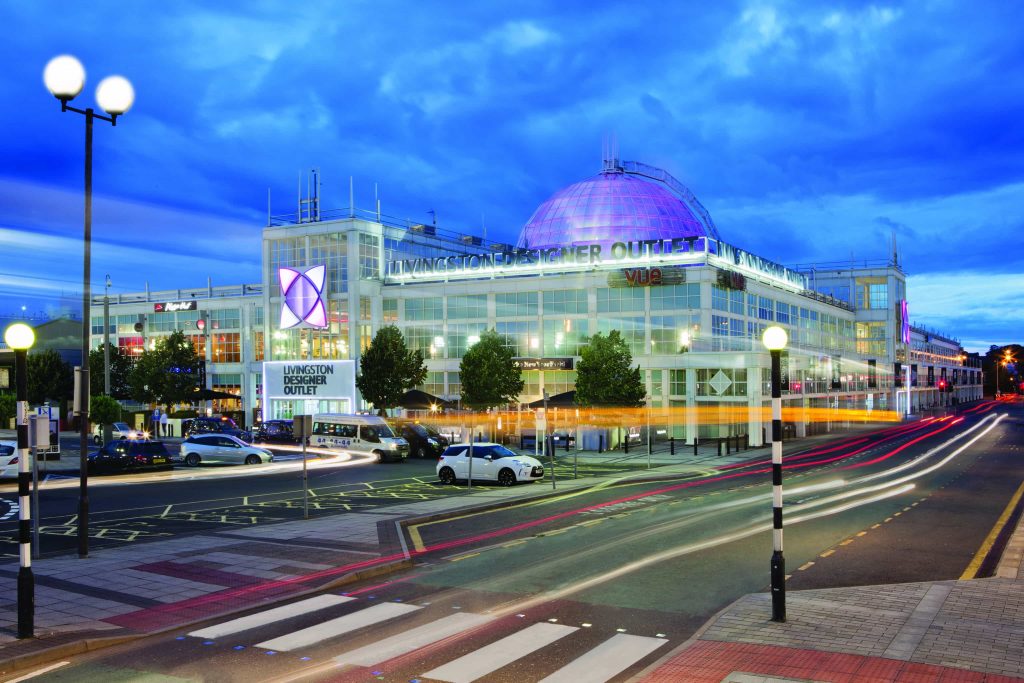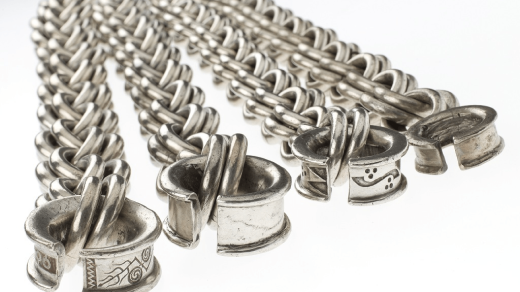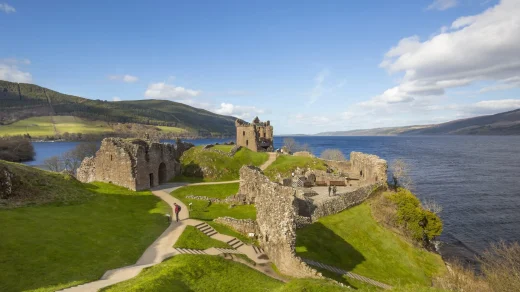Livingston (Scots: Leivinstoun, Scottish Gaelic: Baile Dhunlèibhe) is the largest town in West Lothian, Scotland. Designated in 1962, it is the fourth post-war new town to be built in Scotland. Taking its name from a village of the same name incorporated into the new town, it was originally developed in the then-counties of Midlothian and West Lothian. It is situated approximately fifteen miles (25 km) west of Edinburgh and thirty miles (48 km) east of Glasgow, and is close to the towns of Broxburn to the north-east and Bathgate to the north-west.
The town was built around a collection of small villages, Livingston Village, Bellsquarry and Livingston Station (now part of Deans). It has a number of residential precincts or areas. These include Craigshill, Howden, Ladywell, Knightsridge, Deans, Dedridge, Murieston, Almondvale, Eliburn, Kirkton and Adambrae. There are several large industrial estates in Livingston, including Houston industrial estate, Brucefield Industrial Estate, Alba Business Park, and Kirkton Campus. The locality of Livingston as defined by the General Register Office for Scotland (GROS) includes Uphall Station and Pumpherston. The wider urban settlement, also as defined by the GROS, also includes Mid Calder and East Calder. Other neighbouring villages include: Kirknewton, Polbeth and West Calder. The 2001 UK Census reported that the town had a population of 50,826. The 2011 UK Census showed the population of Livingston had increased to 56,269. Livingston is the second-largest settlement in the Lothians after Edinburgh. Until 1963, the area surrounding the ancient village of Livingston was open farmland, and the ancient village is now called Livingston Village.

Livingston is first mentioned in an early 12th-century charter as Villa Levingi (Leving’s town). In 1128 David I granted the newly founded Abbey of Holyrood control of the church at Livingston and its income in a charter that was witnessed by Turstani filii Levingi (Thurstan Levingsson). He built a fortified tower (Livingston Peel) which no longer survives. The settlement that grew up around it became known as Levingstoun, Layingston and eventually fixed at Livingston. The Leving family controlled the area until dying out in 1512. From 1512 until 1671 the tower house was occupied by the Murrays of Elibank. In 1670, the Edinburgh botanic garden was founded by Dr. Robert Sibbald and Dr. Andrew Balfour using the plant collection from the Elibank private gardens of Sir Patrick Murray, 2nd Lord Elibank, following his death in September 1671. In the late 17th century, the Peel was demolished and replaced by a house called Livingston Place. The estate eventually passed from the Murray family to the Cunningham family and it was eventually acquired by the Earl of Rosebery in 1828 and demolished in 1840. The area of the former gardens and house is now a local garden and park, named Peel park. The formal layout and planting in the park reflect the historic gardens, and a new peel mound and moat was recreated to reflect the earlier history.
The area around Livingston was historically an important shale oil area, and the world’s first oil boom occurred in West Lothian. This was based on oil extracted from shale, and by 1870 over 3 million tons of shale were being mined each year in the area around Livingston. Output declined with the discovery of liquid oil reserves around the world in the early 1900s, but shale mining only finally ceased in 1962. The “bings” that characterise oil shale mining in West Lothian have largely been flattened. Two shale bings nearby are scheduled monuments – Five Sisters and Greendykes.
By 1898, the main Livingston village was recorded as having several houses, a mill, a Church of Scotland church, a United Free church, a school and a coaching inn. The oldest church, Livingston Old Kirk, in its current form, dates from 1732 and is an example of plain Presbetryrian architecture from the Georgian period. It stands on the site of a pre-Reformation church which appears to have stood on the site from c.1350 to 1650. The nearby coaching inn was built in 1760 and the poet Robert Burns is said to have been a guest. The nearby Livingston Mill was also built around the same date, in 1770 although there is evidence that suggests there may have been a mill on the site since the 14th or 15th century. Around 1 mile north of Livingston village, there was a railway station with a smaller settlement called Livingston Station which is now part of Deans. Livingston station was built as a settlement to serve the workforce and their families of the nearby Deans Oil Works, owned by the Pumpherston Oil Company. Livingston Station had six streets with homes, as well as a store, a small church and a works institute. The original Livingston railway station was operated by the Edinburgh and Bathgate Railway and opened on 12 November 1849. British Railways closed the station on 1 November 1948 following the ending of passenger services on the line. In the 1980s a site was chosen for a new railway station on the line to the east of the original station and Livingston North station opened on 24 March 1986, concurrent with the re-introduction of passenger services. The Livingston Village and Livingston Station settlements were both subsequently incorporated into Livingston new town in the 20th century.
New Town
Illustrative New Town architecture in Deans. Much of the town includes architecture from the 1960s and 1970s.
The Logo of Livingston Development Corporation (LDC). The LDC guided the creation of the new town from 1962 to 1997.
Under the New Towns Act of 1946 and in part to ease overcrowding in Glasgow, Livingston was designated as a New Town on 16 April 1962. Livingston was the fourth new town of five in Scotland; the others were East Kilbride, Glenrothes, Cumbernauld and Irvine. Three villages (Livingston Village and Livingston Station in the old parish of Livingston and Bellsquarry in the parish of Mid Calder) and numerous farmsteads were incorporated into the Livingston new town. Published in July 1962, the first edition of the Livingston plan designated new areas for housing for up to 100,000 people, as well as areas for new industry and offices, marked by new roads, pathways and recreational spaces, under an 84 square mile survey led by Professors Donald Robertson and Sir Robert Matthew. Many of the initial houses were factory-built. A subsequent edition to the plan was published in 1966 with Livingston intended as the centre of a new population area of up to 250,000 persons in the Lothians.
In order to build, manage and promote Livingston, a quango organisation was formed, the Livingston Development Corporation (LDC). Sir David Lowe, a local large scale farmer and businessman, was appointed chairman. Following designation of the new town, the first building begun was the Corporation’s own offices in 1963. Residential construction began in 1962 with the first homes to be built as part of the new town being constructed in Deans (to house corporation employees and construction workers). The first major development of the new town took place in Craigshill, with the first people moving into the newly built housing areas of Livingston in April 1964. The construction of the areas of Howden, Ladywell and Knightsridge began in the late 1960s and this was followed in the 1970s by the creation of Dedrige and further development of Deans. Some of the first prominent buildings in the new town built in these decades included Riverside Primary School (the first primary school built in the new town in April 1966), the new towns first public house (the Tower in Craigshill built in 1968), Craigshill school (the first secondary school built in the new town in 1969), and the ‘Centre’ (Livingstons shopping centre) built in 1977.
On 9 November 1979 the Livingston UFO Incident took place, when Robert Taylor, employed by the Livingston Development Corporation, is said to have encountered a UFO on Dechmont Law and the incident was subsequently investigated by Lothian and Borders Police. It is the only UFO incident that was part of a criminal investigation in the United Kingdom.
In 1984 a new railway station was built for the town the Shotts Line called Livingston South which was shortly followed by another station Livingston North on the redeveloped Edinburgh to Bathgate Line in 1986. These stations replaced the former Livingston and Newpark stations which had closed before the construction of the town.
In 1995 Livingston gained its professional football team, Livingston F.C. which was essentially the relocation of Meadowbank Thistle F.C. from Edinburgh.
The Livingston Development Corporation guided Livingston until its mandate expired on 22 March 1997 and the town was transferred to the West Lothian Council. The last major construction operation carried out by the LDC was the Almondvale Stadium. Housing development continues under West Lothian Council, through private developers such as Barratt Developments and Bellway, and under the management of housing associations such as the Almond Housing Association and the West Lothian Housing Partnership.
Geography
Livingston is the 8th largest settlement and the 3rd largest town in Scotland. It is also the 171st largest settlement in the United Kingdom. It lies 30 miles away from Glasgow and 15 miles from Edinburgh.
The Livingston new town was planned so that the River Almond, the namesake of the Almondvale district, runs through the town centre.
Outer Livingston districts include Wester Dechmont, Deans (including the Deans Industrial Estate), Kirkton and Houston to the north, Craigshill to the east, Bellsquarry (including the Brucefield Industrial Estate) and Murieston to the south, and Adambrae and Kirkton Campus to the east of the town. Craigshill takes its name from the Scottish Gaelic word for the slopes of a hill.
Inner central districts in the town include Almondvale, Livingston Village, Eliburn, Howden, Ladywell, Knightsridge, Dedridge. Ladywell takes its name from a historic well that was dedicated to Mary and was said to have been used by medieval Scottish Kings as a site for a yearly Royal touching ceremony.
The geology of Livingston is similar to that of West Lothian in general, chracterised by former glacial history and composed of Till. This includes areas of clay, sand, silt and gravel, primarily along the Almond river valley environment. Parts of Livingston also have isolated areas of carboniferous sedimentary rocks (primarily in and around the Deans area of the town) which were worked and extracted for shale oil in the 19th and 20th centuries. The oldest rocks are classified as part of the Inverclyde Group (primarily located in the south-east of Livingston between Linhouse Water and Kirknewton). There are also several areas of underlying sandstone in Livingston which were used as local quarries, now since defunct, including Dedridge quarry, refilled and landscaped as a local park (Quarry Froggy Park). Bellsquarry originates from a former Burdiehouse Limestone quarry and the surname of its owner, Mr Bell. The quarry was in operation by 1782 and continued until the early 20th century, when it was used as a rubbish dump before being tidied and covered.
Until the development of the new town, except for localised industry in areas such as Deans, the area was primarily agricultural, with farming focused on the alluvial soils of the Almond river. The area is now primarily an urban area although as a new town, Livingston is characterised by large areas of forested paths, public parks and open spaces. Forested areas in Livingston include Livingston Old Wood (38.97 acres) in Eliburn, the Wilderness in Adambrae (45.91 acres), Bellsquarry Wood (43.86 acres), Kirkton Woods (15.64 acres), Linhouse Glen, and Calder Woods (on the boundary with East Calder).
Economy
Tesco’s Distribution Centre for Scotland and Northern Ireland between Livingston and Bathgate
The area where Livingston now sits was historically dominated by oil shale mining, which is evident from the bings which still exist on much of the surrounding landscape. The designation of Livingston as a new town in the 1960s attracted new light industries to the area, with high technology and pharmaceutical companies moving into the town. Livingston formed a major hub in Scotland’s Silicon Glen with factories constructed in purpose-build business parks at Houston Industrial Estate and at Kirkton Campus. Like most other areas this went into a slow decline from the late 1990s with the closures of companies including Motorola and NEC. Several multi-national companies still have factories in the town, including Wyman Gordon who manufacturer aircraft components on the Houston Industrial Estate. Other companies on the Houston Industrial Estate include Mitsubishi Electric (who have an electric air conditioning factory which produces almost 150,000 air conditioning and heat pump units every year), Paterson Arran (a food manufacturer whose bakery, the Royal Burgh Bakery is located in Livingston), and DS Smith (who have a box production plant on the estate).
From the 1970s, Kirkton Campus on the western edge of the town was developed as Scotland’s first technology science park. Developed for private businesses by the LDC, it included 300 acres of landscaped offices and factory sites along the Killandean Burn and River Almond. While several factories have since closed, it is still home to several businesses, including Sky UK who is one of the largest private sector employers in Livingston with a range of offices and their biggest UK contact centre at Kirkton Campus. Other companies at Kirkton Campus include Merck (a pharmaceutical company), Gore W L & Associates (a clothes manufacturer), SCION Instruments (a chromatography and gas detector manufacturer), JPT Foodtech, and Palletways (a distribution service who have a 50,000 sq ft hub facility).
Össur Offices in Alba Business Park, Livingston.
Other large employers include Tesco (whose distribution centre for Scotland and Northern Ireland is located on the northern edge of the town), Schuch (whose head office and customer service centre is on the Deans Industrial Estate in Livingston), Shin-Etsu Europe (who have a manufacturing facility in Livingston that produces semiconductors), those in the retail sector in the shopping centres, supermarkets, and the health care sector such as NHS Scotland. Witherby Seamanship, established in 1740, is one of the oldest publishers in the United Kingdom and their offices and warehouse is located in Livingston at Navigation House. Valneva SE is a biotech company that has a manufacturing facility in Livingston which produces vaccines, including a vaccine against COVID-19.
The Brucefield Industrial Estate is located west of Bellsquarry and includes companies such as Diet Chef (a food manufacturer), ScoMac (a catering equipment manufacturer), and Snag tights (a textile manufacturer based in Livingston that exports to 90 countries).
Alba Business Park is located in Livingston to the west of Adambrae and includes a technology innovation centre. Companies in the Alba Business Park include Glenmorangie, the whisky distillers, who have offices and a bottling facility that was opened in 2011. Quintiles IMS, a healthcare data provider, have a large office in the business park. The prosthetic company Össur (Touch Bionics) has a research and development facility in the park.
Town centre

Almondvale Boulevard in the centre of Livingston is a road connecting the large shopping centres of the town and runs parallel to the river Almond.
Livingston town centre sits on the southern edge of the Almond Valley and provides shops and services for the surrounding area. It is bounded by a ring road to the east and has been purposely planned, distinguishing it from many other town centres. Howden Park is located immediately north of the town centre and adjoins Howden House, an 18th century house which contains an arts centre and private housing. The south western edge of the town centre is dominated by retail parks. Livingston’s town centre also contains a large number of offices. Private sector offices are also concentrated at the eastern and western edges of the centre and along the Almondvale Boulevard. Other facilities in the centre include: hotels, a swimming pool and local authority gym, and restaurants and pubs. Almondvale Football Stadium and West Lothian College are located at the north western edge of the town centre.
The Livingston Civic Centre was completed in June 2009 and officially opened by then-First Minister Alex Salmond on 25 November 2009. The Civic Centre is located just north of The Centre on the bank of the River Almond. It was home to the divisional headquarters of Lothian and Borders Police until the creation of Police Scotland in 2013, as well as the sheriff and justice of the peace, West Lothian Council, the Crown Office and Procurator Fiscal Service, the Scottish Children’s Reporter Administration, Lothian and Borders Fire and Rescue Service and the West Lothian Community Health and Care Partnership.




I wanted to express how amazing your post is. I could tell you are an authority on this subject because of how obvious it is. If everything is up to you, I would want to follow your feed so I can be informed when you publish new content. Many thanks, and keep up the fantastic work.